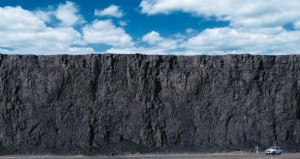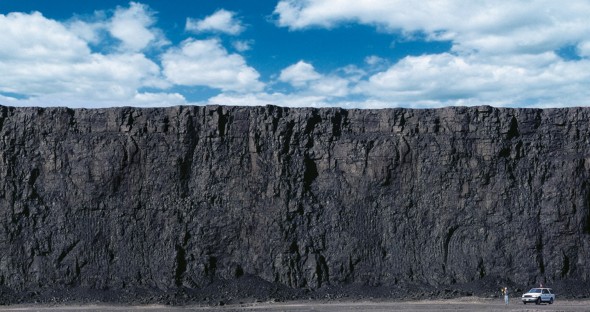
Peabody Energy’s Bankruptcy Shows the Limits of “Clean Coal”
Peabody Energy’s Bankruptcy Shows the Limits of “Clean Coal”
Investments in carbon capture and storage technology have largely been failures.
Peabody Energy, the world’s largest private-sector coal producer, filed for bankruptcy Wednesday after a long decline in prices and demand for coal in the U.S. When I spoke to Peabody CEO (now executive chairman) Greg Boyce in his St. Louis office two years ago, he enthusiastically detailed the two strategies that would send Peabody to greater heights: sending coal to China and building so-called “clean coal” plants.
Peabody’s plan to export coal to China via huge coal terminals on the West Coast never materialized, because environmental groups and local governments opposed the terminals and coal use in China has fallen dramatically. The second play, so-called “clean coal,” has faltered because capturing the carbon dioxide from coal plant smokestacks and burying it far underground has proved stubbornly cost-prohibitive, particularly in an era of cheap natural gas.
Peabody invested hundreds of millions of dollars in clean coal technology, setting up a research center at the University of Wyoming (the Powder River Basin, in eastern Wyoming, is the home of Peabody’s huge North Antelope-Rochelle mine) and funding research projects in the U.S. and China. It wasn’t alone, either: Despite some $13 billion in worldwide R&D investment over the last decade, carbon capture would still add 30 to 40 percent to the cost of power generation from coal plants—a non-starter if it’s to be competitive with inexpensive natural gas.

Those carbon capture projects that made it off the drawing board have mostly been busts: Last year the Department of Energy canceled funding for the FutureGen project, a coal-fired power plant with carbon capture in Illinois that had been under development for more than a dozen years. And the New York Times reported last month that a similar effort in Canada, the Boundary Dam project, “has been plagued by multiple shutdowns, has fallen way short of its emissions targets, and faces an unresolved problem with its core technology.”
Still, Peabody’s collapse will not completely kill off the effort to clean up coal, misguided though it may be: today there are 14 large-scale CCS projects in operation (only one of which includes power generation), according to the Global Carbon Capture and Storage Institute, with another eight under construction.
(Read more: USA Today, New York Times, Fortune)

Leave a Reply